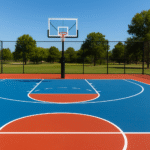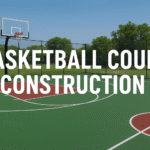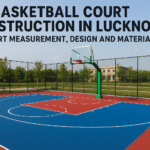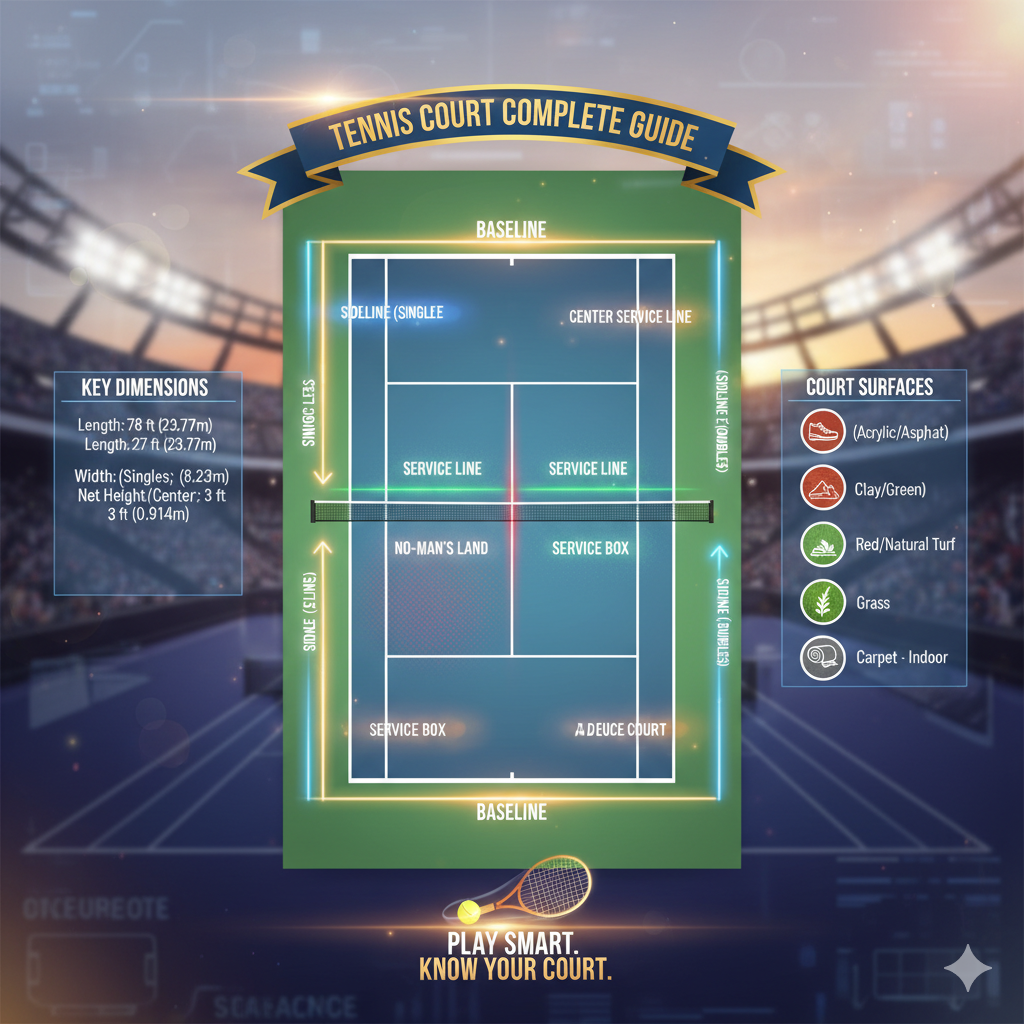Introduction
Tennis is one of the most respected and widely played sports across the world. In India too, the sport has been steadily growing, and cities like Banda are witnessing an increasing demand for professional tennis courts. Schools, colleges, residential societies, and sports academies are now looking to invest in quality infrastructure to promote tennis.
However, building a tennis court is more than just laying a surface—it requires precision, durable materials, expert construction, and compliance with international standards to provide a safe and professional playing experience.
Importance of a Proper Tennis Court
Why is a well-constructed tennis court essential?
-
Safety: Prevents slips and injuries with non-slip and cushioned surfaces.
-
Durability: Withstands Banda’s extreme summers and heavy monsoons.
-
Game Quality: Provides consistent ball bounce and enhances professional-level play.
-
Low Maintenance: A well-built court reduces frequent repair costs.
Types of Tennis Courts
Depending on the surface and purpose, tennis courts can be:
-
Clay Courts
-
Slower pace with higher bounce.
-
Affordable but requires regular upkeep.
-
-
Grass Courts
-
Traditional and prestigious.
-
Fast gameplay but high maintenance.
-
-
Hard Courts (Concrete/Asphalt with Acrylic Coating)
-
Most common in India.
-
Balanced speed and bounce.
-
Durable and weather-resistant.
-
-
Synthetic / Cushioned Courts
-
Provide shock absorption and player comfort.
-
Preferred by modern clubs and indoor facilities.
-
Standard Dimensions of a Tennis Court
-
Length: 78 feet
-
Width: 36 feet (doubles) / 27 feet (singles)
-
Total Playing Area with Buffer: 120 × 60 feet recommended for safe movement.
Materials for Tennis Court Construction in Banda
-
Concrete Base: Long-lasting and stable.
-
Asphalt Base: Affordable but requires more maintenance.
-
Acrylic Coating: Provides grip, all-weather resistance, and smooth play.
-
Synthetic Surfaces: Ideal for indoor courts and professional training.
Base Preparation – Tennis Court in Banda
Before surface installation, base preparation is crucial:
-
Land Survey & Excavation: Ensures proper leveling.
-
Drainage System: Essential during Banda’s monsoon to prevent waterlogging.
-
Strong Foundation: Concrete or asphalt base for durability.
-
Surface Finishing: Smooth application with non-slip coating.
Lighting for Tennis Courts
For extended play and professional tournaments, proper lighting is necessary:
-
Outdoor Courts: High-mast LED floodlights for even distribution.
-
Indoor Courts: Glare-free LED lighting to mimic natural daylight.
Fencing & Accessories
-
Fencing: 10–12 feet chain-link fencing to keep balls inside the court.
-
Net System: 3.5 feet high at the posts, 3 feet at the center.
-
Seating & Benches: For academies, clubs, and tournaments.
Cost of Tennis Court Construction in Banda
The cost varies depending on size, materials, and features:
-
Basic Hard Court: ₹12–18 lakhs.
-
Synthetic or Acrylic Premium Court: ₹20–30 lakhs.
-
Indoor Tennis Court with Lighting & Facilities: ₹35 lakhs and above.
Choosing the Right Tennis Court Contractor in Banda
When selecting a contractor, look for:
-
Proven experience in sports infrastructure.
-
Successful projects in tennis and multi-sport facilities.
-
Warranty and after-sales maintenance support.
-
Use of international-grade materials.
Maintenance Tips for Long-Lasting Courts
-
Regularly clean the surface from dirt and debris.
-
Seal small cracks before they expand.
-
Reapply acrylic coating every 4–5 years.
-
Maintain nets, fencing, and lighting.
Why Banda is Emerging as a Sports Hub
Banda has seen steady growth in sports infrastructure with support from government schemes, private investments, and increasing enthusiasm among the youth. With modern tennis courts, the city is positioning itself as a rising hub for both recreational and professional-level sports.
Conclusion
A tennis court is more than a sports facility—it’s an investment in health, recreation, and professional training. With Banda’s growing sports culture, building a high-quality tennis court ensures durability, safety, and compliance with international standards, making it a smart long-term choice for schools, societies, and clubs.
FAQs
1. What is the standard size of a tennis court?
78 × 36 feet (doubles) with a total playing area of 120 × 60 feet recommended.
2. How much does it cost to build a tennis court in Banda?
₹12–30 lakhs, depending on surface type and added features.
3. How long does it take to build a tennis court?
6–10 weeks, based on site preparation and weather.
4. Which surface is best for Banda’s climate?
Concrete with acrylic coating is the most durable and weather-friendly.
5. Can a tennis court be used for other sports?
Yes, with multi-sport line markings, it can host pickleball, badminton, and volleyball




